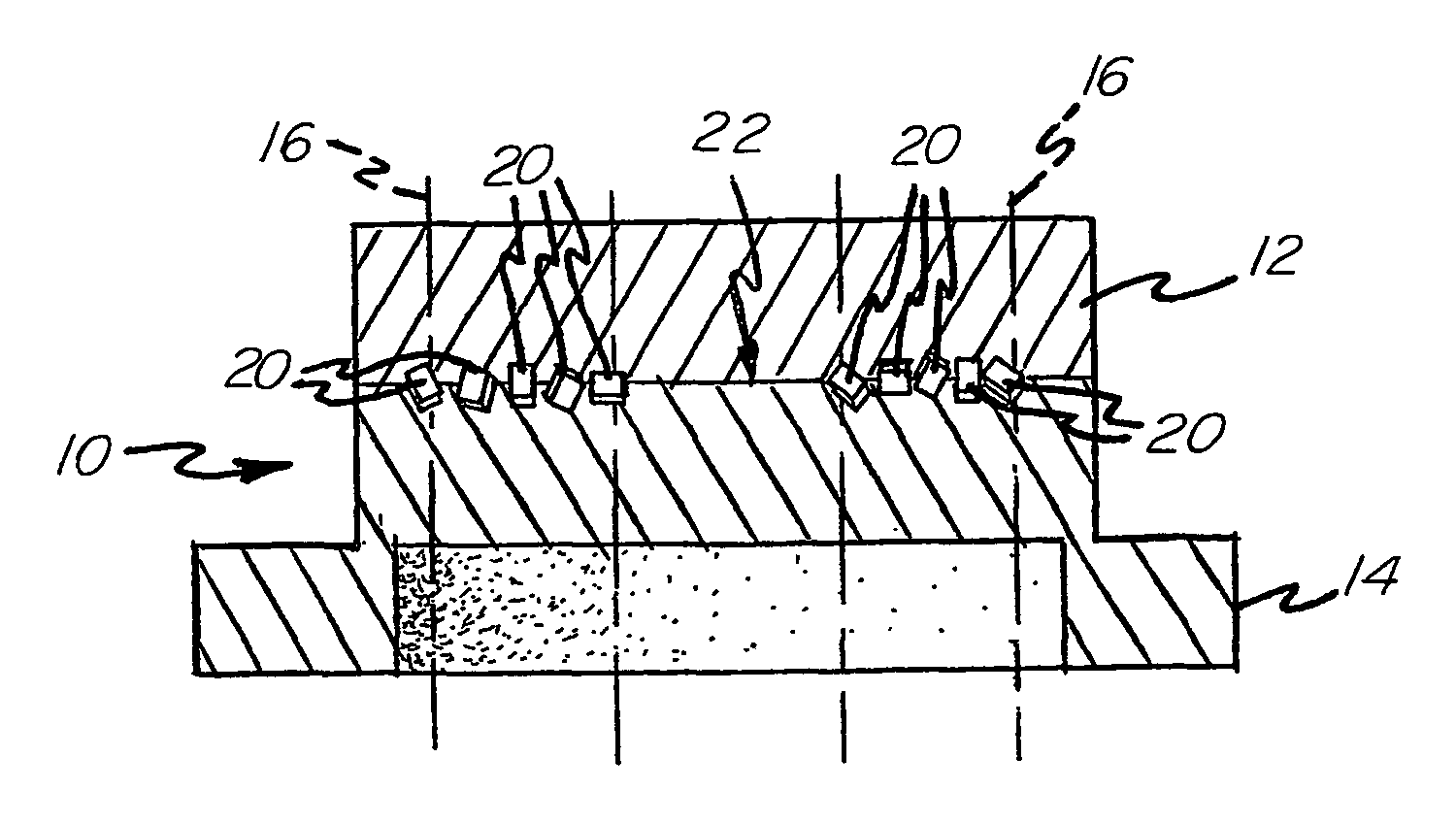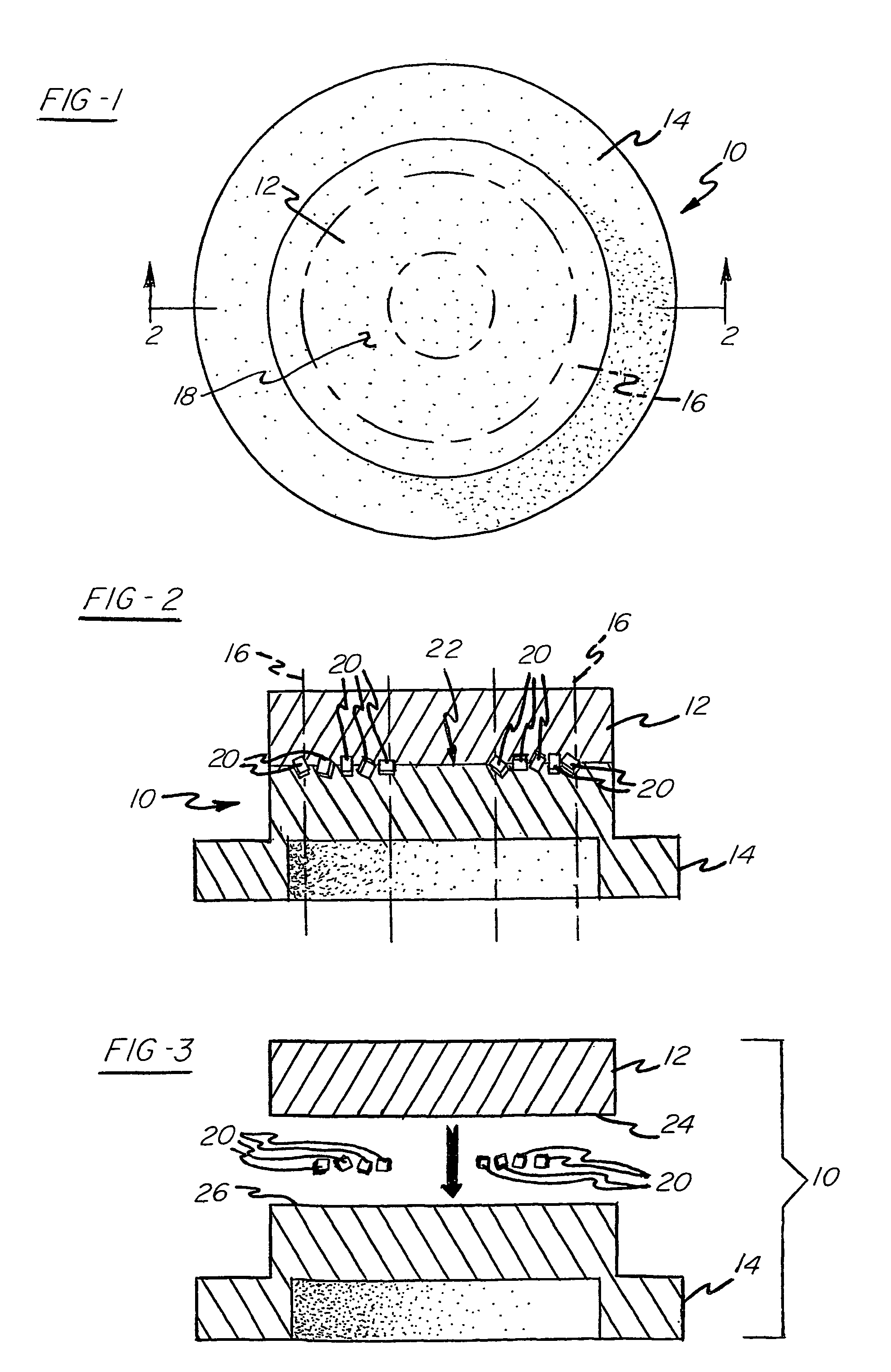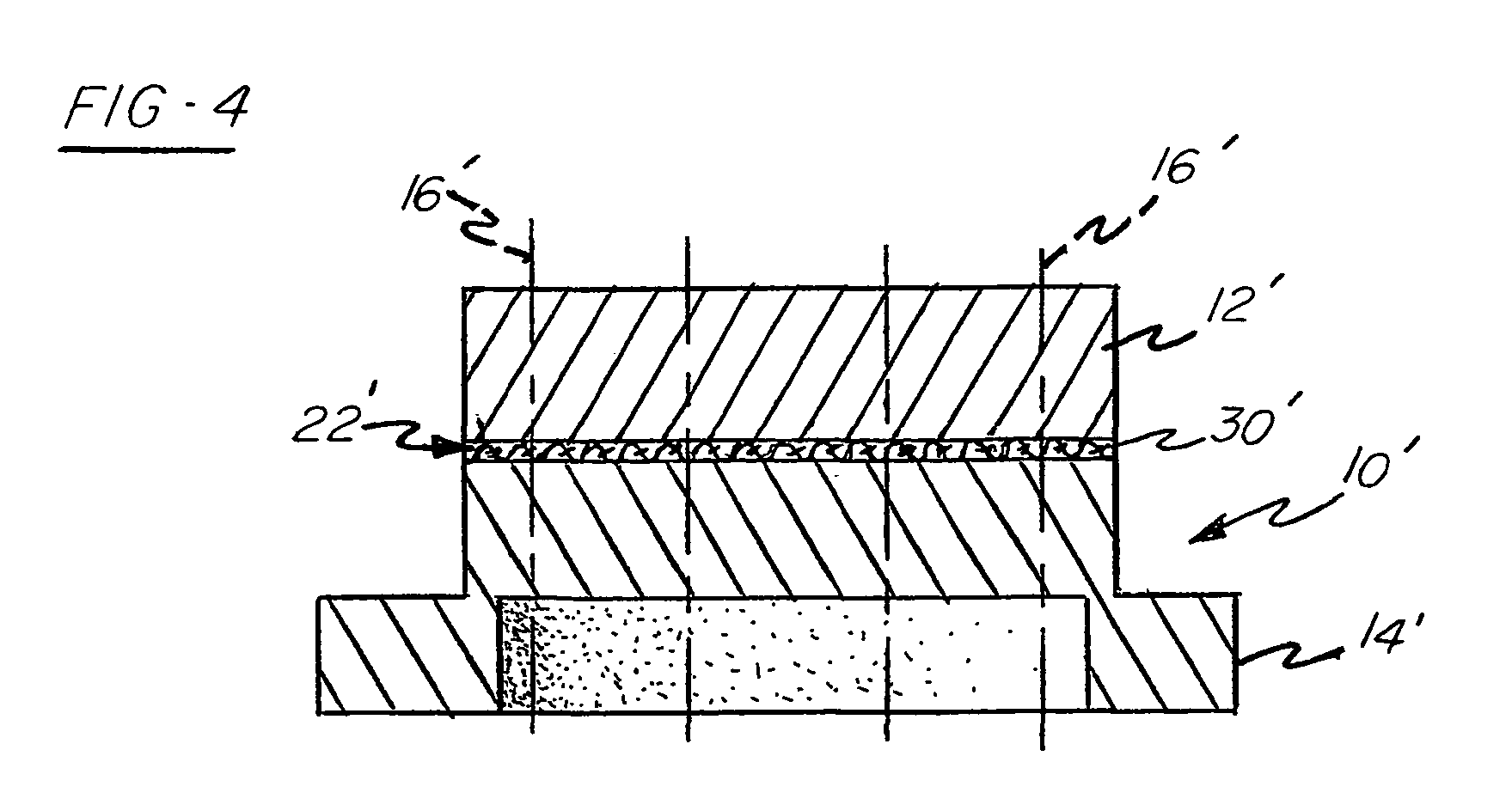High purity sputter targets with target end-of-life indication and method of manufacture
a sputter target and end-of-life technology, applied in the field of cathodic sputtering methods and equipment, can solve the problems of severe damage to the sputtering chamber, affecting the quality of sputtering, and uneven erosion of the surface of the targ
- Summary
- Abstract
- Description
- Claims
- Application Information
AI Technical Summary
Benefits of technology
Problems solved by technology
Method used
Image
Examples
example
[0055]A study was performed on 12.98 inch aluminum alloy targets to evaluate the usefulness of the preferred methods and apparati of the invention in indicating target end-of-life conditions. Eight radial stripes of boron nitride paint were applied on rear surfaces of two of the targets across the main sputter track of each. Eight radial stripes of a ceramic paste containing aluminum oxide were applied on a rear surface of a third target across the main sputter track. In the latter case, the rear surface of the third target was first roughened using a handheld engraver with a sharp carbide tip. A ceramic paste comprising aluminum oxide in a silicone-based liquid sold under the trademark CERAMABOND 552 by Aremco Products, Inc. of Valley Cottage, N.Y. was then painted onto the roughened portions of the rear surface of the third target. The paste was allowed to air dry for 15 minutes and then the target was bonded to a backing plate by vacuum electron beam welding. The two targets pain...
PUM
| Property | Measurement | Unit |
|---|---|---|
| Diameter | aaaaa | aaaaa |
| Diameter | aaaaa | aaaaa |
| Dielectric polarization enthalpy | aaaaa | aaaaa |
Abstract
Description
Claims
Application Information
 Login to View More
Login to View More - R&D
- Intellectual Property
- Life Sciences
- Materials
- Tech Scout
- Unparalleled Data Quality
- Higher Quality Content
- 60% Fewer Hallucinations
Browse by: Latest US Patents, China's latest patents, Technical Efficacy Thesaurus, Application Domain, Technology Topic, Popular Technical Reports.
© 2025 PatSnap. All rights reserved.Legal|Privacy policy|Modern Slavery Act Transparency Statement|Sitemap|About US| Contact US: help@patsnap.com



